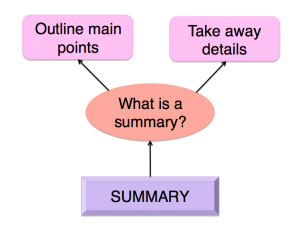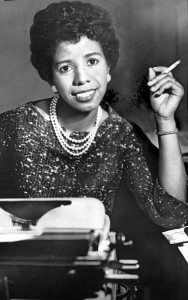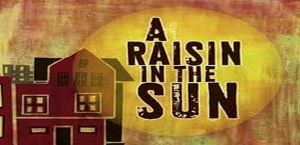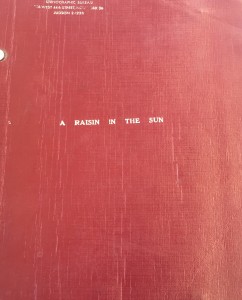Before we begin, I would like to introduce myself. My name is Tim Jernigan. I’m a freshman at Emory University where I am currently undecided on majors, but I am interested in Business or Theater. Being undecided, I thought I would try out different classes that interest me. This is why I am taking Dr. Cooke’s ENG 101 and the reason for this portfolio. This portfolio will show the areas of improvement that I have achieved using key terms established by the class. The key terms are different areas of writing that, when all of them are used correctly, will make for better writing.
Throughout this class, I have developed a proficiency of some of these key terms. Those key terms are summary and known-new. Those two terms have helped my writing by increasing the overall flow of my paper. By flow I mean the ease with which one can read the paper. This ease will typically mean how well someone can follow along with the paper. The reader should be able to grasp all of the information that is being put in front of them. Sometimes though, that information is lost in a mess of poorly structured sentences. These sentences can derive from bad summary and by abruptly ending ideas from not utilizing the Known-New contract.
Throughout this portfolio, I will show how the mastery of the two key terms have increased the ‘flow’ of my papers.

Summary
A good summary should be able to identify the main points of a topic without having to add information. This picture below gives a pretty straightforward explanation.

Throughout the year, we have worked on different ways to improve our summary skills. One of the ways we learned to better summarize was through the use of syntax. Syntax is the arrangement of words to create a well-organized sentence. A well-organized sentence is one that reads well without having to increase the word count in order to add vital information.
I have improved my summary by learning how to have stronger syntax. The stronger syntax has been helpful in removing the clutter that clogged up the flow in my papers. My writing would become difficult to read because my sentences would become unruly and unstructured. The lack of structure caused the paper to become uncomfortable to read because often times the idea of the paper would become convoluted.
Using chronological order I will show my progression from poor summary skills to a strong grasp on summary. The progression will include: my proposal paper, my curated exhibit, and the a Diary Entry.
Artifact 1: Proposal Paper
‘Similarly, To Be Young, Black and Gifted considers the issues of many plays of Hansberry’s including the issues faced by a lower class bohemian couple as they struggle to make it as entertainers as in The Sign in Sidney Brustein’s Window. ‘
Selected Portion from my Proposal Statement
This is a selection from one of our earliest assignments. That assignment was the proposal we wrote for our curated exhibit. The proposal holds many examples of my early writing that will be helpful in establishing where I started my progression. A great place to start is with the quote above. The quote is from the ‘Statement’ portion of my proposal. In the statement I attempt to express what the theme of the proposal is by describing what I feel when I think about the topic at hand. The topic was Lorraine Hansberry and her works as they relate to housing restrictions such as Gentrification and Restrictive Covenants. If you would like to read the proposal, it is below.
This selection is the first example of my work towards better summary. The main objective of the sentence was to introduce the book To Be Young, Gifted, and Black by Lorraine Hansberry.  The book is a collection of her works that are strung together to form a story. Since the book includes multiple characters, it is unnecessary to mention any in particular. This is especially true because the characters that I mention in the ‘summary’ are not vital to the rest of the statement as a whole.
The book is a collection of her works that are strung together to form a story. Since the book includes multiple characters, it is unnecessary to mention any in particular. This is especially true because the characters that I mention in the ‘summary’ are not vital to the rest of the statement as a whole.
Further, the sentence structure is unruly. The last portion “as in The Sign in Sidney Brustein’s Window ” is an odd way to phrase what I intended to get across to the reader. The reader will instead be unsure if I am regarding To Be Young, Black and Gifted or The Sign in Sidney Brustein’s Window. Not being able to decipher which play is being discussed presents the reader with a difficult read and could be responsible for missed ideas. Missed ideas like this will often come from poor syntax and structure.
The specific criticism I give above is, while not applicable to every sentence, present throughout my entire Statement. I found that I often added on segments to certain ideas that, at the time, I believed to be improvements. Looking back, the additional segments were instead detrimental to the ‘flow’ of the paper.
Artifact 2: Curated Exhibit
‘Hansberry spent her early years watching her father fight for the right to move into a white neighborhood. The family in the play, the Youngers, try to move to a white neighborhood with extreme resistance from the residents. This piece showcases the housing restrictions common in the early 1940’s-1950’s that Hansberry experienced.’
Portion of my Curated Exhibit
This portion is from my curated exhibit. The curated exhibit was an assignment that allowed the students to design an exhibit, like in a museum, in order to select an artifact from a famous author and relate it to a current issue. My artifact was A Raisin in the Sun by Lorraine Hansberry and my current issue was gentrification. The two are related due to their connections with housing restrictions. Hopefully you can read about these connections in my curated exhibit (unless the link does not work for everyone because you have to sign into blackboard). Regardless, I will still use the segment above as the example of how I began improving my summary skills.

All of the sentences above present information that is easily known with basic knowledge. That basic knowledge is simply knowing the plot to the play A Raisin in the Sun and, while less known, the basic history of Lorraine Hansberry and US history. The already known knowledge is important for a summary because it is the known knowledge on which a summary should focus. Having learned this about summarizing since writing the proposal, I applied it to most of my writing in this exhibit.
The best way I removed clutter and improved the summary was by using syntax and sentence structure. The sentences above are simple and structured in a way that is easy to understand. Now that I have made the sentence easy to understand because of good structure it lacks some information that is useful for the summary I was trying to give. In the first sentence I do not mention how or where the father fought. The where is important for the summary because it helps the reader make another connection between Hansberry and her play. Similarly, I do not mention where the Youngers move from or why. Even though I discuss it later, it is important to specify early on for the sake of information. This is the simple kind of information that makes the reader have a better understanding of the story that will overall increase flow as well as provide a stronger, more thorough summary.
I could see the summaries become better, but they now lacked information that would otherwise help the reader. I was mad at first that I now found myself at the opposite side of the spectrum, but at least the summaries were easier to read now. Adding known information would be an easier correction than removing unimportant information. I worked on these corrections with in class examples and through the act of revisions.
Artifact 3: Time to Reflect
‘The chapter discusses the accessibility and the maneuverability of a website and how that makes the overall experience better even if the actual content is not wonderful.’
Portion of a Diary Entry
This segment is from a Diary Entry (which can be clicked on above) where we discussed the different types of mediums through which work can be presented. Those mediums include websites, portfolios, videos, etc. The reason we were learning about these mediums was so that we could utilize them in the future as well as learning tips on how to improve our portfolios. The tips we learned were from the chapter in which we got a prompt telling us to write about websites with respect to layout, accessibility, color design, and other aesthetic aspects. Those different aspects would be used in our portfolio to improve the experience of the reader.
In the quote above, I discuss a segment of the chapter that talks about how well the user can move throughout the website. Maneuverability is an important part of the enjoyment of a website regardless of what the website promotes or how well it promotes it. This sentence is what I gathered as the main points of the portion I was aiming to summarize. Using only the main points and only the information that is needed, I successfully created a summary that was able to give the reader a thorough understanding of what the chapter discusses. The points discussed were accessibility/maneuverability, experiencing good/bad accessibility/maneuverability, and how content is not a factor in this aspect of experience.


By structuring the sentence such that it is easy to read, I have created flow that does not hinder the readers understanding of the topic.
The rest of the Diary Entry showcases my progression towards better summary. Most of the summaries are used to describe other segments in the chapter or are used to discuss different websites or ideas presented in the chapter. The summaries inside this Diary Entry are proof of improvement and what makes this the best artifact to showcase improvement. I believe that I have developed good summaries in this artifact as well as proper use of syntax and structure to improve flow. This is seen through my use of main points and no added detail to create a proper summary.
Known-Knew
The Known-New contract is the process of transitioning from sentence to sentence by using stresses. The stress is typically the last segment of a sentence while the first segment is the topic. For example: I have a blue shirt. Blue shirts have been found to improve people’s moods. These findings have been proven by scientists. The scientists first… and so forth.
One can begin to see the pattern of Topic ⇒ Stress (new information) ⇒ Topic (based on stress) ⇒ New Stress
The topic should present the reader with already known information. This information will have been discussed as a stress from the previous sentence or is generally known information. This means that stress will, of course, be where new information comes from. The new information (stress) does not have to come at the very end. Instead it could be in the middle if there is some explanation following the stress. This is important to remember when trying to find the stress. Looking for the stress only at the end of the sentence can cause the Known-New contract to work incorrectly.
If used correctly, the Known-New contract will effectively increase flow by having a constant stream of information that is not stopped by an unrelated topic. The topic should always be related to the stress and if the writer finds that they need to pick a topic that does not relate to the stress, they should make a new paragraph. The new paragraph will give the writer a chance to create a new stream of thought instead of trying to clutter a paragraph with too many ideas. The clutter will cause convoluted idea development and force the reader to reread sections or give up on the paper entirely.
Throughout the semester I struggled with the Known-New contract. The idea was taught to us relatively early on in the year while writing our proposals. While writing, we did many revisions as a class to try and grasp the features that make the Known-New special. These features, as I stated above, include the benefit that the contract has on the ‘flow’ of a paper. I didn’t understand the idea of flow, or at least I wasn’t sure what the professor was truly looking for. Was he asking us to make the writing sound better or was he actually showing us a new method of writing? Of course the latter is the answer, but up until the middle of the year I was not entirely sure.

The artifacts I will use include my proposal, my curated exhibit, and my portfolio. I believe that these artifacts show a progression towards efficient use of the Known-New contract starting with a poor understanding. The understanding was eventually improved by the time I began writing my curated exhibit thanks to more lessons and group workshops on the topic. The further understanding eventually added up to, in my opinion, a great understanding of how the Known-New contract works.
Artifact 1: Proposal
‘As you can see from her works, Hansberry’s views on the matter of class and race would show she understands that money can help remove certain people from an area, such as keeping a black family out of a neighborhood or kicking that same family out of their neighborhood. Both Raisin and Young, Black and Gifted contain aspects that still ring true even 57 years later. Issues of race and societal norms involving acclimation and normalization of black culture are prevalent today just as they were for Beneatha in Raisin (Zukin, 130). Hansberry portrays many of her characters as literary versions of real life people and the struggles they face.’
This segment is from the objective of my proposal. In the objective, I aim to inform the reader of the message that I wish to relay. That message was that gentrification is an issue that  deserves attention and that, hopefully, my curated exhibit will inspire people to learn about this issue. When I learned more about gentrification, I started to see how widespread and dangerous it is. The danger spawns from the displacement of the people living in the gentrified neighborhood. Those residents are tossed out of their homes often without a place to go.
deserves attention and that, hopefully, my curated exhibit will inspire people to learn about this issue. When I learned more about gentrification, I started to see how widespread and dangerous it is. The danger spawns from the displacement of the people living in the gentrified neighborhood. Those residents are tossed out of their homes often without a place to go.
Now that I have given what I believe to be an important lesson in gentrification, I will discuss my sentence and how I didn’t quite understand what I was doing.
The first sentence is a different topic from the sentence that follows. The first topic is Hansberry’s views on race and class. The stress is about money’s ability to remove families from their neighborhoods. According to the Known-New contract, that idea concerning money would become the topic of the second sentence. The second sentence’s topic, however, mentions two of Hansberry’s plays instead of discussing Hansberry’s opinions. The incorrect usage violates the Known-New contract and causes the flow of the paper to stop.
The third sentence violates the contract as well. The stress of the second sentence is how issues of housing in Hansberry’s era still exist today. The topic in the third sentence concerns the issues of race and societal norms. The stress and topic do not align to create a transfer of knowledge that allows the reader to easily follow the paper. The transfer is, instead, cut off by deviating away from the stress.

The fourth sentence, as you may have guessed, follows in the same misguided footsteps as the three previous. The failed attempts at utilizing the Known-New contract caused this portion to be too wide-ranging in ideas. The ideas include Hansberry, two plays, and society. These three things are related, but they would need stronger connections in order to prove that relation. Those stronger connections could be achieved by using the Known-New contract properly. I decided to learn the art of the Known-New contract by taking notes in class and by occasionally watching videos.
The objective can be found here: Objective
Artifact 2: Curated Exhibit
‘Over time, the area saw a rise in affluence and therefore also saw a rise in the cost of housing. The rise in the cost of housing caused the existing, poorer residents to move out because they could no longer afford to live there. Much like restrictive covenants, this process causes lower income, often minority, groups of people to once again congregate into communities that are not as well funded.’
Selection from my Curated Exhibit
This is a selection from the same curated exhibit that I discussed earlier in this portfolio. The curated exhibit allowed me to try out my proficiency with the Known-New contract after my first (unsuccessful) attempt with it in my proposal. This second time around came with more experience and knowledge because of group lessons and a series of videos. The new information further cemented what exactly topics and stresses were in the context of a sentence.
The stress in the first sentence concerns the rising costs of housing due to gentrification. The idea of rising costs is then used as the topic of the next sentence. The transfer of information was successful because the topic now matches the stress. The connection will then create a flowing paper unless of course the connection becomes less strong. The strength can be reduced by making the stress and the topic have a weak relation to each other.
This weak relation is seen in my next sentence. This sentence has a topic related to the process of increasing prices in order to remove unwanted residents. This topic, however, is not strongly related to the stress of the previous sentence. The stress is about the power of money causing people to move out of their homes, a slightly different idea from the topic I wrote. Luckily, the disconnect is not too extreme to where the flow is cut off completely, just slowed down.
My knowledge of the Known-New contract has improved from my proposal to my curated exhibit as seen by my superior execution in the example above. That superior execution, however, is relative to the proposal and does not mean that I was yet satisfied. I was still making weak connections that did not preserve the flow of the paper. The flow was still being hindered by my inefficient use of the Known-New contract because I still didn’t know that I was making these mistakes. I would correct my flawed understanding by once again taking advantage of group lessons and actually learning about the process on my own. I think that initiative, at least I hope, is showcased in my next artifact: my narrative essay.
Artifact 3: Narrative Essay
‘The plaque underneath the paper talked about the issue mentioned in the introduction for the section: systemic issues. Systemic issues are ones that have become engrained in a system such that they become difficult to remove. The plaque talked about how it was difficult for minorities and underprivileged people to get out the hard environments because they simply weren’t allowed to move anywhere else. The lack of mobility causes those majority minority, often deteriorated neighborhoods to stay that way. Because they never change, the neighborhoods are underfunded and therefore difficult to leave because nobody can make enough to get out’
Selection from Narrative Essay
This selection is from my narrative essay. The essay was a walk-through of my curated exhibit in which I was able to describe the exhibits the way that I pictured them. I did this by talking about the room that housed the artifact, the artifact itself, and my reaction to the exhibit. My descriptions were at times in depth and gave strong descriptions of the room that housed the artifacts. These descriptions were often made stronger and more fluid because of my use of the Known-New contract.
The selected portion from my narrative essay gives a good example of my progression because of the perfect use of the contract. The first usage is in the first sentence where I use the stress to introduce new information. This information, systemic issues, is then used as the basis of information for the next sentences topic. Because the topic matches the stress, the flow continues on into the sentence all the way to the next stress. By following the same pattern over and over, I was able to make this selection flow. This flow, as I said, was present throughout my narrative essay regardless of the other flaws within my essay. This is why I believe that this section really shows one of the final steps in my progression towards the mastery of the Known-New contract.

I thought really hard about what should be the featured artifact. The artifact should show a mastery of the skills throughout the entire artifact. Well, I believe that this portfolio has universally shown competence of the Known-New contract and of summary.
Starting from the beginning of the portfolio I utilize the Known-New contract to make my introduction flow. The contract connected the sentences in a way that made it easy to read and gave it a lighthearted, simple feel. This feeling, though, is not the only thing for which I used the Known-New contract. I used the contract to explain my progression towards better summary. My progression could be hard to explain because of the, in my opinion, partially nuanced ways in which I adjusted my style, but I believe that by keeping a strong transfer of information I was able to keep the flow moving and allow the reader to better understand my changes.
Using past examples in order to show my progression has hopefully shown that I understand what is a correct usage of the contract, and of summary, and what is not. I have done this by dissecting those sentences in order to exhibit the correct usages or exhibit where I went wrong. Exhibiting both correct and incorrect usages allow me to show you how I advanced in my usage of the known-new contract and of summary
This portfolio also shows good use of summary. I gave quick examples of entire papers, a task that can sometimes be hard. By using my newfound skills of summary, I believe that I was able to explain the main points that I wanted get across in a way that was helpful to the flow of the paper. Furthermore, I had to explain the main points of certain lessons that I learned, like the Known-New contract. Using past examples of my use of summary and then dissecting them also showed my knowledge of summary. This knowledge was used to explain what were the strong points of my past writing and what were the unsuccessful points of my past writing.
In conclusion, I believe that my portfolio accurately displays my knowledge of the two key terms I used. I displayed this knowledge through correct usage throughout the portfolio, but also by examining my past works and acknowledging where I went wrong and how I corrected those flaws in later attempts. Through the correct usage of these methods, I have accomplished what I said would be the outcome: flow. The paper flows well because the sentences link together and the information is transferred well. Further, flow is improved because of my usage of summary in order to remove clutter and decrease the amount of unnecessary information when important. When I read through this portfolio, I find that I can follow along well with the points being made without any hinderances.
I want to thank you for giving me the chance to show you what I learned this year in my ENG 101 class. I enjoyed the process despite how many times I felt like I did not know how to write a paper.
Tim Jernigan

